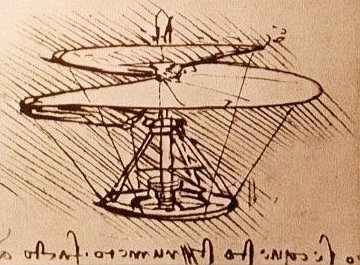Leonardo Da Vinci was an Italian Renaissance artist, painter, and scientist. He was well versed in a multitude of subjects including architecture, technology, and numerous natural sciences. He lived in an ever changing world. With the end of the Middle Ages, man began to have a thirst for knowledge. Italy at this time was a series of city-states in competition with each other. Florence was a major artistic and cultural center in which Da Vinci would produce his works.
Da Vinci was the developer sfumato. This painting technique manipulated the transitions between light and shade When looking at his paintings certain objects have a haze appearance to them. This was a pivotal development. Light and darkness were being depicted in a different way. Sfumato was developed in Milan when Da Vinci was commissioned to paint religious themed artwork.
Da Vinci was not only an artist, but a scientist as well. He studied human anatomy, mechanics, and optics. He also had ideas for a flying machine and other inventions, which he illustrated in notebooks. His skills as an engineer were so impressive that Ludovico Sforza commissioned him as designer of water pipes and defenses. Simultaneously, he would fulfill artistic duties to the Duke of Milan. Da Vinci attempted to understand the attributes of motion (Issac Newton a century later would). Leonardo Da Vinci was in many respects ahead of his time.
Proportions of the Human Figure (1492)
Mona Lisa (1503)
The Flying Machine
Further Reading
Krausse, Anna. The Story of Painting From the Renaissance to the Present .Bonn: H.F. Ullmann,
2005.




No comments:
Post a Comment